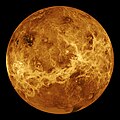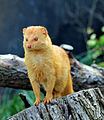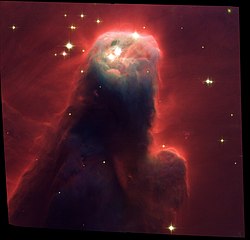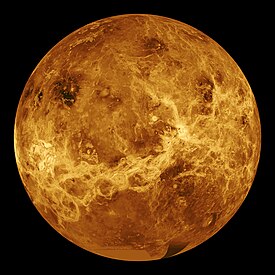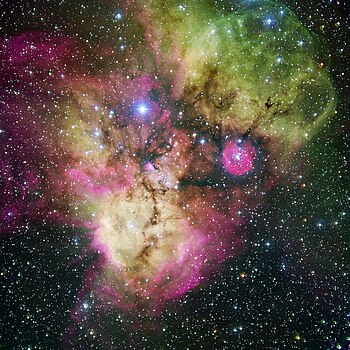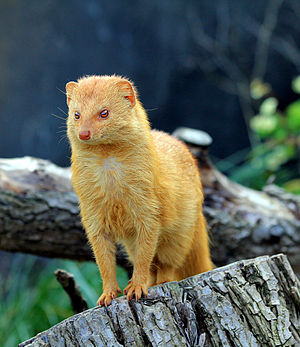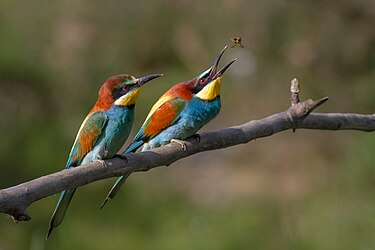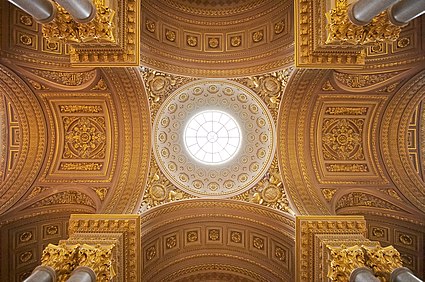What's an article without a beautiful picture?
18 Featured pictures|9 Valued pictures
Gallery of Featured Pictures
Promotion Messages
 |
Your
Featured picture candidate has been promoted Your nomination for
featured picture status,
Image:MtCleveland ISS013-E-24184.jpg, gained a consensus of support, and has been promoted. If you would like to nominate another image, please do so at
Wikipedia:Featured picture candidates.
jjron (
talk) 14:08, 19 August 2008 (UTC)
|
 |
Your
Featured picture candidate has been promoted Your nomination for
featured picture status,
Image:Cone Nebula (NGC 2264) Star-Forming Pillar of Gas and Dust.jpg, gained a consensus of support, and has been promoted. If you would like to nominate another image, please do so at
Wikipedia:Featured picture candidates.
jjron (
talk) 08:56, 29 August 2008 (UTC)
|
 |
Your
Featured picture candidate has been promoted Your nomination for
featured picture status,
Image:Chachani summit edited.jpg, gained a consensus of support, and has been promoted. If you would like to nominate another image, please do so at
Wikipedia:Featured picture candidates.
MER-C 05:13, 19 September 2008 (UTC)
|
 |
Your
Featured picture candidate has been promoted Your nomination for
featured picture status,
Image:Old timer structural worker2.jpg, gained a consensus of support, and has been promoted. If you would like to nominate another image, please do so at
Wikipedia:Featured picture candidates.
MER-C 05:58, 30 October 2008 (UTC)
|
 |
Your
Featured picture candidate has been promoted Your nomination for
featured picture status,
Image:Venus globe.jpg, gained a consensus of support, and has been promoted. If you would like to nominate another image, please do so at
Wikipedia:Featured picture candidates.
MER-C 03:03, 9 November 2008 (UTC)
|
Your
Featured picture candidate has been promoted Your nomination for
featured picture status,
Image:Hubble2005-01-barred-spiral-galaxy-NGC1300.jpg, gained a consensus of support, and has been promoted. If you would like to nominate another image, please do so at
Wikipedia:Featured picture candidates.
MER-C 07:19, 17 November 2008 (UTC)
|
 |
Your
Featured picture candidate has been promoted Your nomination for
featured picture status,
Image:MtRedoubtedit1.jpg, gained a consensus of support, and has been promoted. If you would like to nominate another image, please do so at
Wikipedia:Featured picture candidates.
MER-C 02:56, 9 December 2008 (UTC)
|
Your
Featured picture candidate has been promoted Your nomination for
featured picture status,
File:Andromeda galaxy Ssc2005-20a1.jpg, gained a consensus of support, and has been promoted. If you would like to nominate another image, please do so at
Wikipedia:Featured picture candidates.
Fir0002 08:07, 15 December 2008 (UTC)
|
 |
Your
Featured picture candidate has been promoted Your nomination for
featured picture status,
File:Hot springs of Pamukkale edit cropped.JPG, gained a consensus of support, and has been promoted. If you would like to nominate another image, please do so at
Wikipedia:Featured picture candidates.
Wronkiew (
talk) 02:00, 9 January 2009 (UTC)
|
 |
Your
Featured picture candidate has been promoted Your nomination for
featured picture status,
File:Sarychev Volcano edit.jpg, gained a consensus of support, and has been promoted. If you would like to nominate another image, please do so at
Wikipedia:Featured picture candidates.
Makeemlighter (
talk) 01:37, 14 December 2010 (UTC)
|
 |
Your
Featured picture candidate has been promoted Your nomination for
featured picture status,
File:Pair of Merops apiaster feeding.jpg, gained a consensus of support, and has been promoted. If you would like to nominate another image, please do so at
Wikipedia:Featured picture candidates.
Armbrust
The Homunculus 09:16, 9 January 2013 (UTC)
|
 |
Your
Featured picture candidate has been promoted Your nomination for
featured picture status,
File:Loligo forbesii.jpg, gained a consensus of support, and has been promoted. If you would like to nominate another image, please do so at
Wikipedia:Featured picture candidates.
Armbrust
The Homunculus 02:45, 14 January 2013 (UTC)
|
 |
Your
Featured picture candidate has been promoted Your nomination for
featured picture status,
File:Schlachtengalerie Decke.jpg, gained a consensus of support, and has been promoted. If you would like to nominate another image, please do so at
Wikipedia:Featured picture candidates.
Armbrust
The Homunculus 22:01, 20 January 2013 (UTC)
|
 |
Your
Featured picture candidate has been promoted Your nomination for
featured picture status,
File:Acrocinus longimanus MHNT femelle.jpg, gained a consensus of support, and has been promoted. If you would like to nominate another image, please do so at
Wikipedia:Featured picture candidates.
Armbrust
The Homunculus 01:42, 30 January 2013 (UTC)
|
 |
Your
Featured picture candidate has been promoted Your nomination for
featured picture status,
File:Rustic Cupha erymanthis by kadavoor.JPG, gained a consensus of support, and has been promoted. If you would like to nominate another image, please do so at
Wikipedia:Featured picture candidates.
Armbrust
The Homunculus 06:17, 30 January 2013 (UTC)
|
 |
Your
Featured picture candidate has been promoted Your nomination for
featured picture status,
File:Galerella sanguinea Zoo Praha 2011-2.jpg, gained a consensus of support, and has been promoted. If you would like to nominate another image, please do so at
Wikipedia:Featured picture candidates.
Armbrust
The Homunculus 20:19, 15 February 2013 (UTC)
|
 |
Your
Featured picture candidate has been promoted Your nomination for
featured picture status,
File:NGC 2467 and Surroundings.jpg, gained a consensus of support, and has been promoted. If you would like to nominate another image, please do so at
Wikipedia:Featured picture candidates.
Armbrust
The Homunculus 21:48, 25 February 2013 (UTC)
|
 |
Your
Featured picture candidate has been promoted Your nomination for
featured picture status,
File:Hydrornis irena - Sri Phang Nga.jpg, gained a consensus of support, and has been promoted. If you would like to nominate another image, please do so at
Wikipedia:Featured picture candidates.
Armbrust
The Homunculus 22:39, 28 May 2013 (UTC)
|
Valued Pictures
 |
 |
 |
 |
 |
 |
 |
 |
Pictures as POTD
An
ash plume drifts from
Mount Cleveland, a
stratovolcano in the
Aleutian Islands off the coast of
Alaska, on May 23, 2006. Astronaut
Jeffrey Williams, flying over the event on board the
International Space Station, was the first to notice the eruption, even before the
Alaska Volcano Observatory.Photo credit: Jeffrey Williams
The
Cone Nebula is located about 2,600
light-years from Earth in the constellation
Monoceros and is so named because of its apparent shape. The cone's shape comes from a
dark nebula consisting of cold molecular
hydrogen and dust in front of a faint
emission nebula containing hydrogen
ionized by
S Monocerotis, the brightest star of
NGC 2264, of which the nebula is part. This image shows the upper 2.5 light-years of the 7 light-year-long Cone Nebula.Photo credit:
Hubble Space Telescope
Summit of the
Chachani (on the left, elevation 6,057 metres or 19,872 feet), and Mt. Fatima (highest point), the highest of three
volcanoes above
Arequipa,
Peru. The path to reach the summit can be seen, going almost to the top of Mt. Fatima first. Because this region is extremely arid, the mountain is almost entirely devoid of
snow.Photo credit:
Alexandre Buisse
A structural worker bolts beams on the framework during the construction of the
Empire State Building in
New York City. The 1,250-foot (380 m) building opened on May 1, 1931, at the time the
tallest building in the world, overtaking the
Chrysler Building (seen to the right), which had just been completed the year before. The addition of a pinnacle and antennas later increased its overall height to 1,472 feet (449 m).Image credit:
Lewis Hine
A
radar image of the
surface of Venus, centered at 180 degrees east longitude. This composite image was created from mapping by the
Magellan probe, supplemented by data gathered by the
Pioneer orbiter, with simulated hues based on color images recorded by
Venera 13 and
14. No
probe has been able to survive more than a few hours on
Venus's surface, which is completely obscured by clouds, because the
atmospheric pressure is some 90 times that of the Earth's, and its surface temperature is around 450 °C (842 °F).Image credit:
NASA
NGC 1300 is a
barred spiral galaxy located roughly 69 million
light-years away in the direction of the constellation
Eridanus. In its core, the nucleus shows its own extraordinary and distinct "grand-design" spiral structure that is about 3,300 light-years long.Photo credit:
Hubble Space Telescope
The eruption cloud of
Mount Redoubt, an
active
stratovolcano found in the
Chigmit Mountains of the
U.S. state of
Alaska, seen here from the
Kenai Peninsula four months after it began erupting on December 14, 1989. This eruption was the first ever to be successfully
predicted through the observation of long-period
seismic events.Photo credit: R. Clucas,
USGS
A
false-color far-
infrared composite image of the
Andromeda Galaxy, the nearest
spiral galaxy to the
Milky Way. The image consists of 11,000 separate exposures taken by the
Spitzer Space Telescope's Multiband Imaging
Photometer at 24
micrometres. The image is dominated by emission from hot
cosmic dust; this is the sharpest image ever taken of this component of the
interstellar medium in another galaxy. This is in dramatic contrast to the more-familiar view at
visible wavelengths, which is dominated by
starlight.Image credit:
NASA/
JPL-
Caltech/K. Gordon (
University of Arizona)
A person traverses in front of a
limestone wall at
Pamukkale, a UNESCO
World Heritage Site located in southwestern
Turkey. Meaning "cotton castle", Pamukkale was the site of the ancient city of
Hierapolis and is now a
tourist attraction, known for its
hot springs that bubble up into pools in the limestone.Photo credit:
Mila Zinkova
A view from space of an
explosive eruption of
Sarychev Peak on June 12, 2009. The
volcano is the central peak of
Matua, an uninhabited island in the
Kuril archipelago in the
Sea of Okhotsk east of Russia and north of Japan. During World War II, the
Imperial Japanese Army had an airfield on the island, which was taken over by the
Soviet Border Troops after the war and abandoned in 1999.Photo:
NASA
- An alternative version of this image was also designated 3rd in 2010's Picture of the Year Contest
Cupha erymanthis is a species of
brush-footed butterfly found in forested areas of tropical South and Southeast Asia which may feed on liquids from
carrion. This specimen was photographed in
Kadavoor,
Kerala, India.Photograph:
Jkadavoor
NGC 2467 is a star-forming region with a visual appearance often likened to a skull or a
mandrill. Located in the southern
constellation of
Puppis, it contains the open
clusters Haffner 18 (centre) and Haffner 19 (middle right: located inside the smaller pink "eye"), as well as vast areas of ionised gas. The bright star at the centre of the largest pink region is HD 64315, a massive
young star that is helping to shape the whole
nebular region's structure.Photograph:
European Southern Observatory
The
slender mongoose (Galerella sanguinea) is a common species of
mongoose found throughout much of sub-Saharan Africa. Dozens of subspecies are known, and the fur color varies between subspecies. The slender mongoose tends to live alone or in pairs, and, although it is an opportunistic
omnivore, it feeds primarily on insects.
This specimen was photographed at the Prague Zoo in the Czech Republic.Photo: Karel Jakubec
The
European bee-eater (Merops apiaster) is a
near passerine bird in the bee-eater family
Meropidae which breeds in southern Europe and in parts of north Africa and western Asia and winters in tropical Africa, India and Sri Lanka. The species predominantly feeds on insects, especially bees, wasps and hornets, which are caught in the air by sorties from an open perch.Photo:
Pierre Dalous
- Designated as Picture of the Year for 2012
The central part of the ceiling at the
Galerie des Batailles, a 120-by-13-metre (394 by 43 ft) gallery at the
Palace of Versailles joining onto the
grand and
petit appartements de la reine. Designed by
Pierre-François-Léonard Fontaine and Frédéric Nepveu upon the order of
Louis Philippe I, the gallery's design includes a wide
cornice supporting a
coffered painted ceiling with
entablatures supported by
Corinthian columns along the length of the gallery.Photo:
-donald-
The
harlequin beetle (Acrocinus longimanus) is a large tropical
longhorn beetle native to the Americas. The species' common name is derived from the elaborate pattern of black, red and greenish yellow markings on the wing covers of both sexes.Photograph:
Didier Descouens
Loligo forbesii is a commercially important species of
squid in the family
Loliginidae. It can be found in the seas around Europe, its range extending through the
Red Sea toward the
East African coast. The squid lives at depths of 10 to 500 m (30 to 1,600 ft), feeding on fish,
polychaetes,
crustaceans, and other
cephalopods.Illustration: Comingio Merculiano




